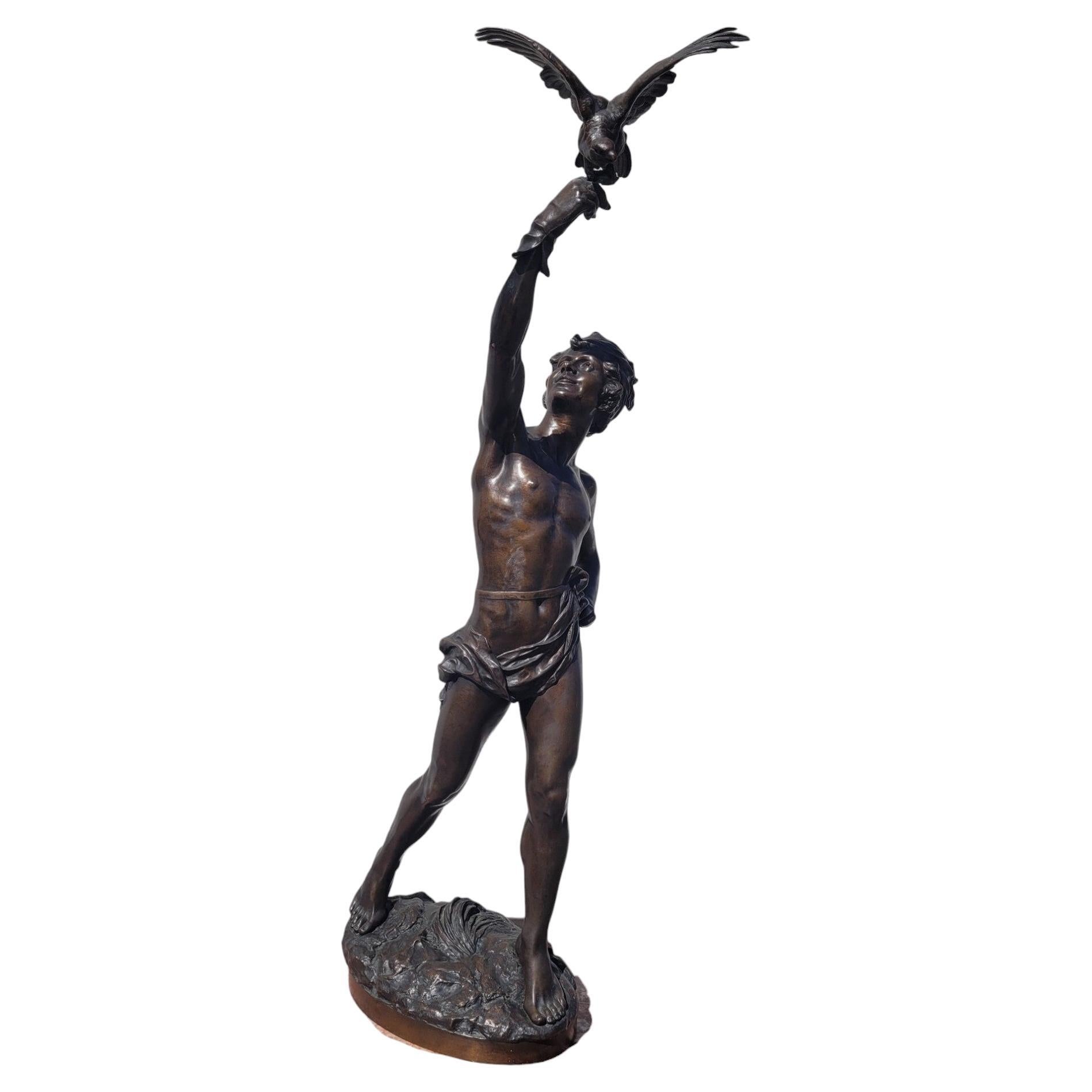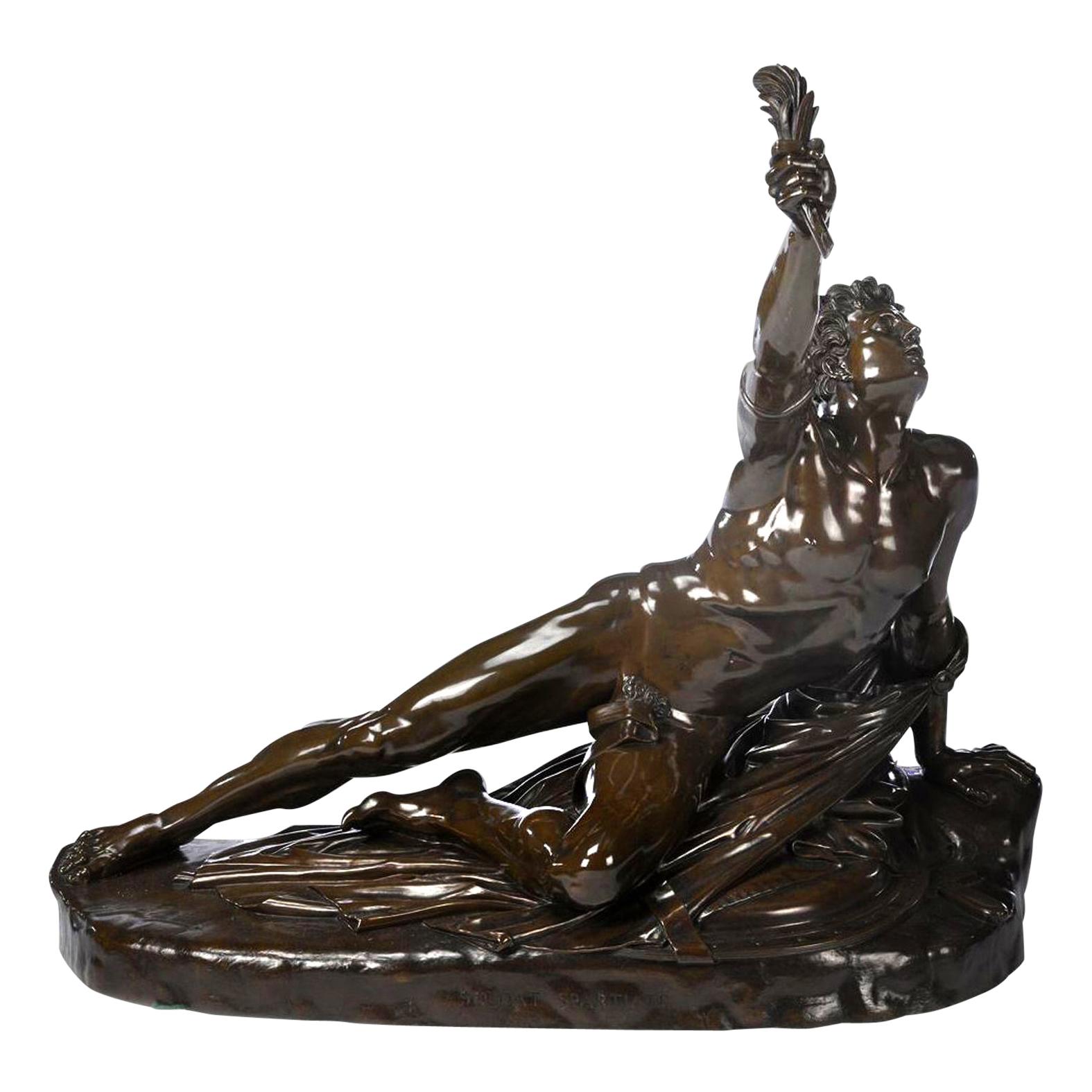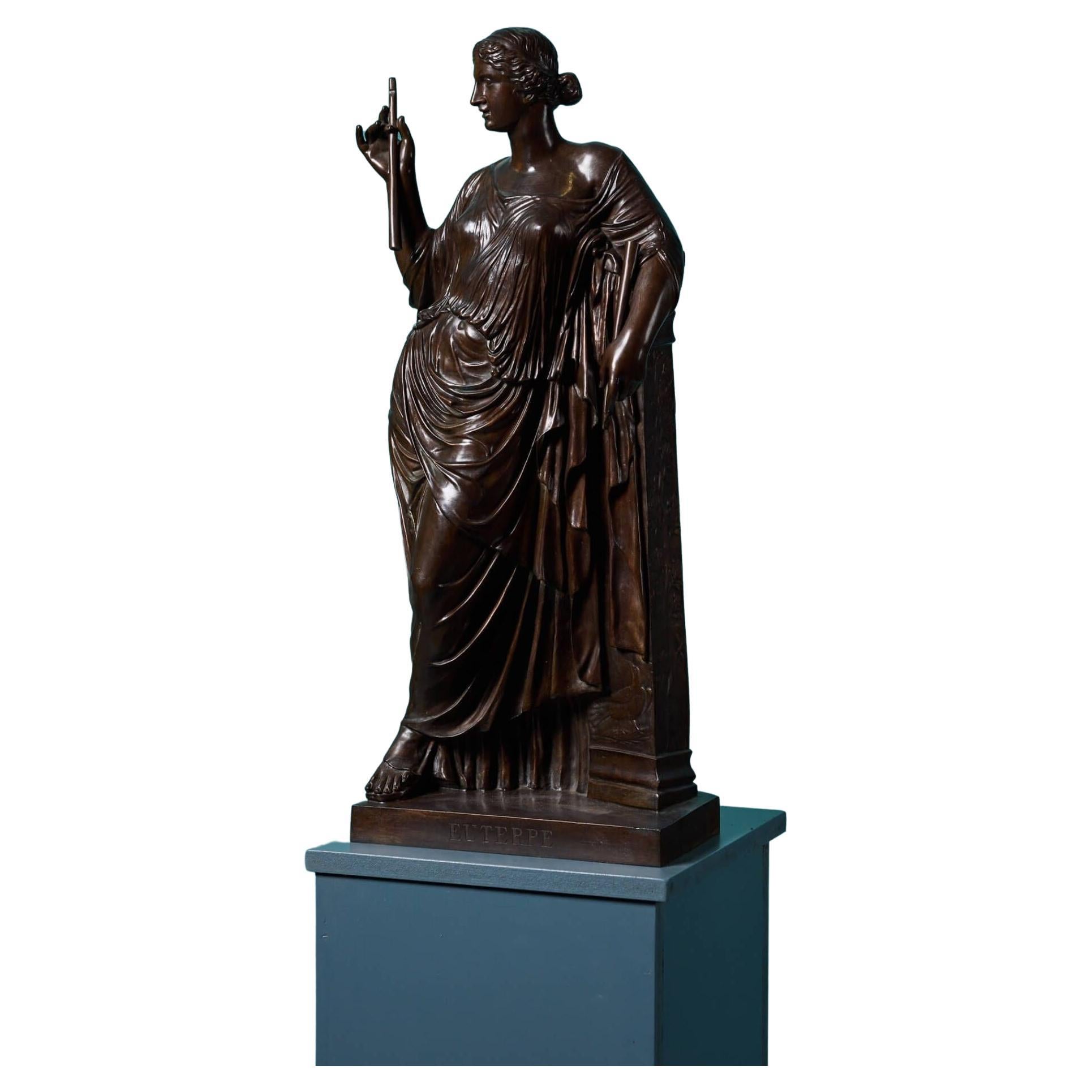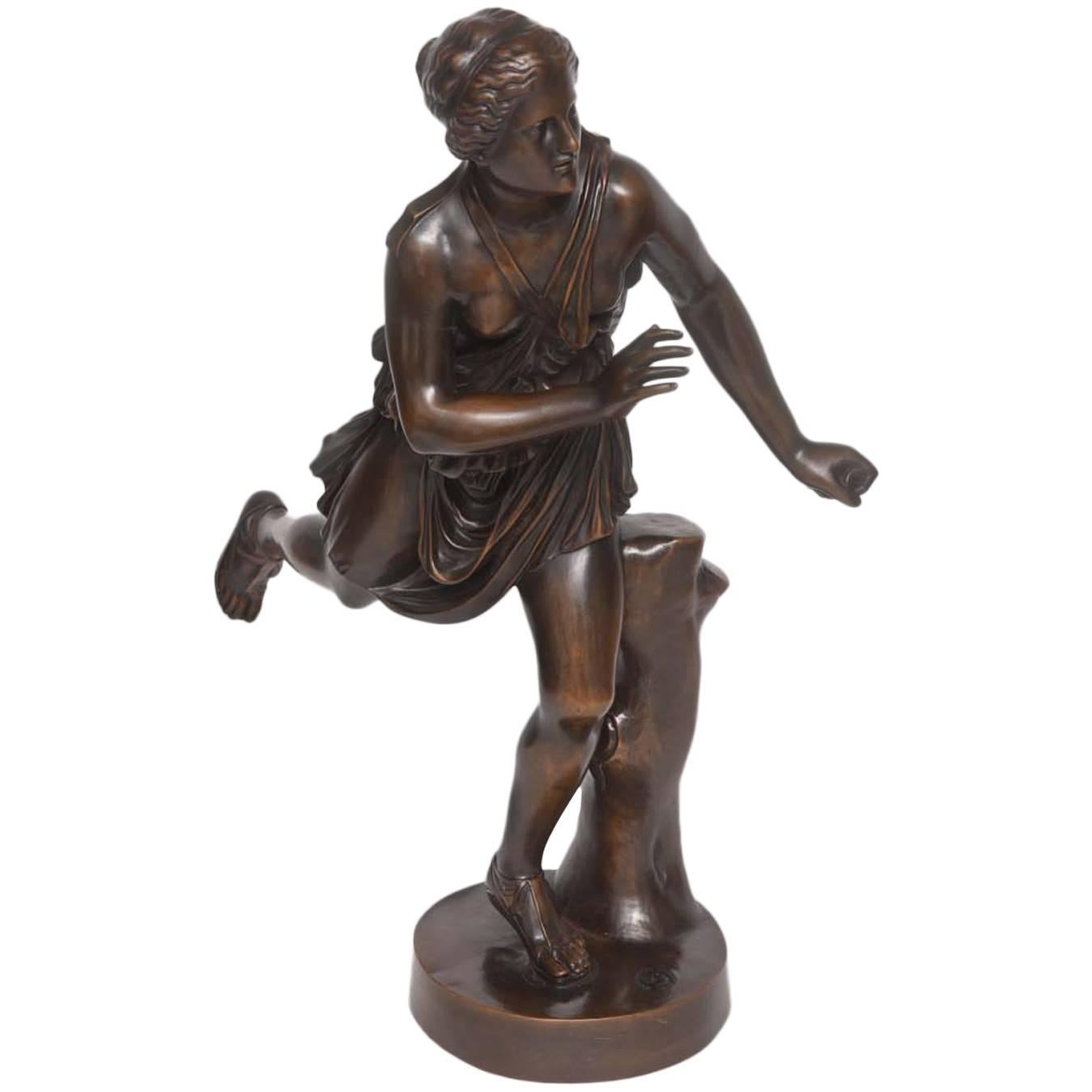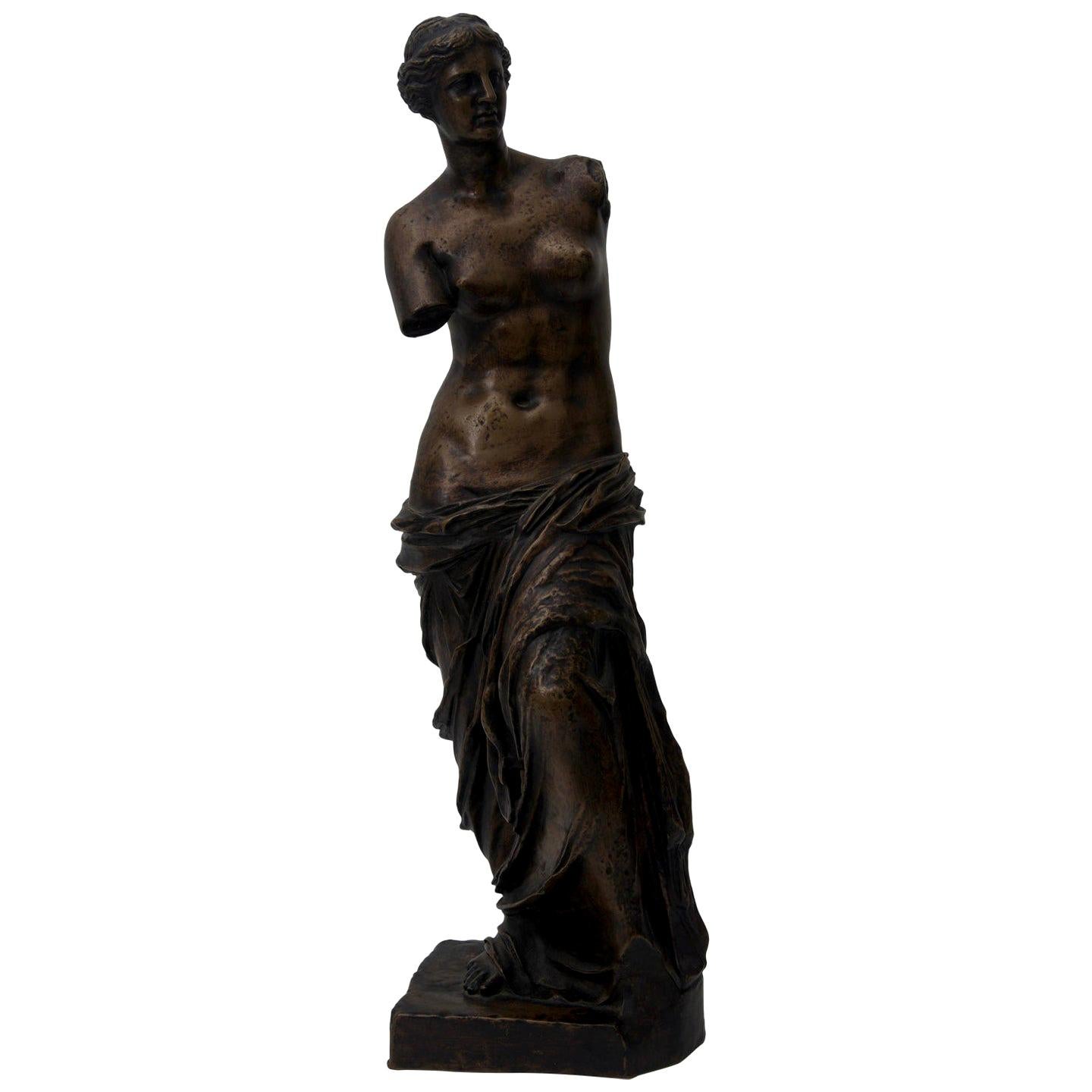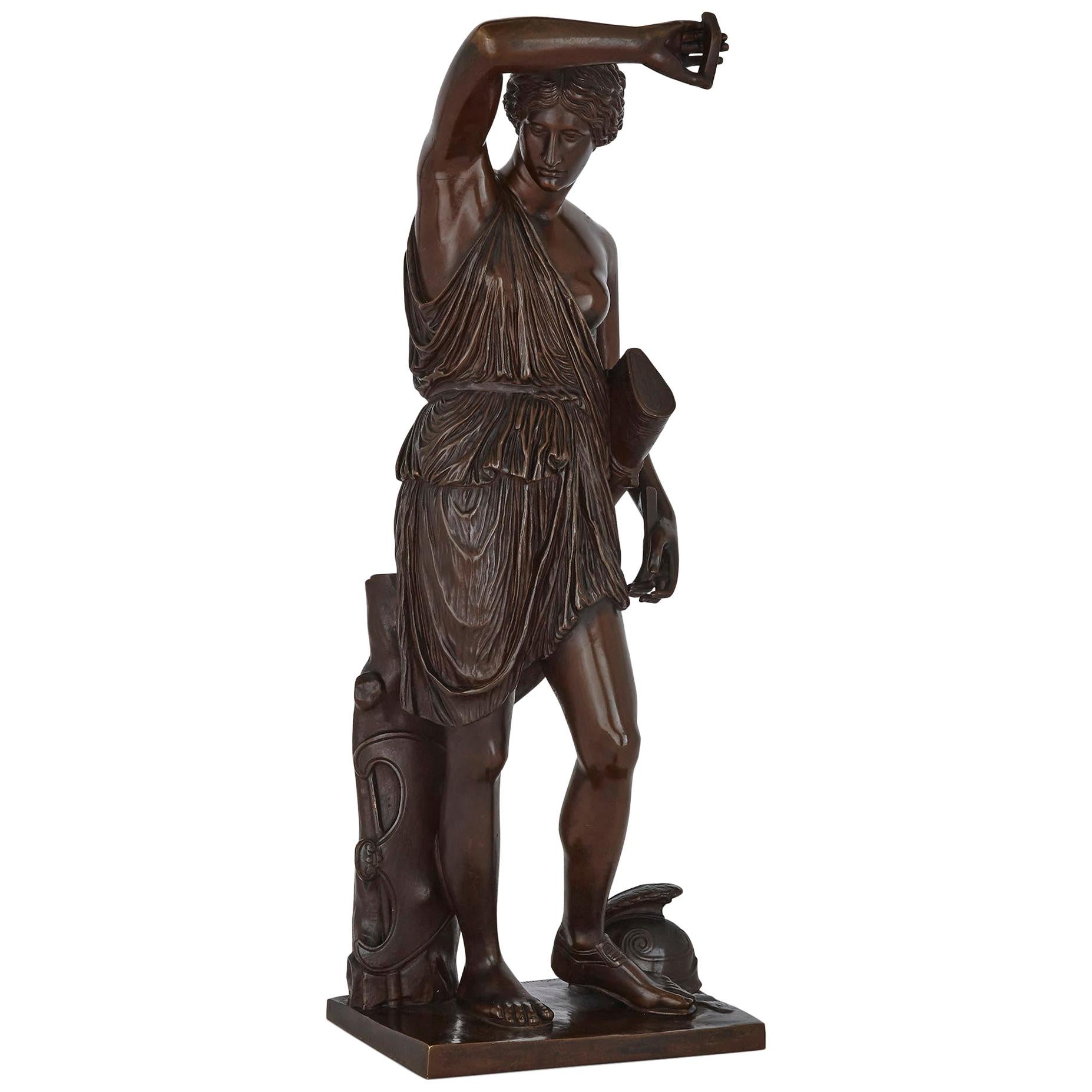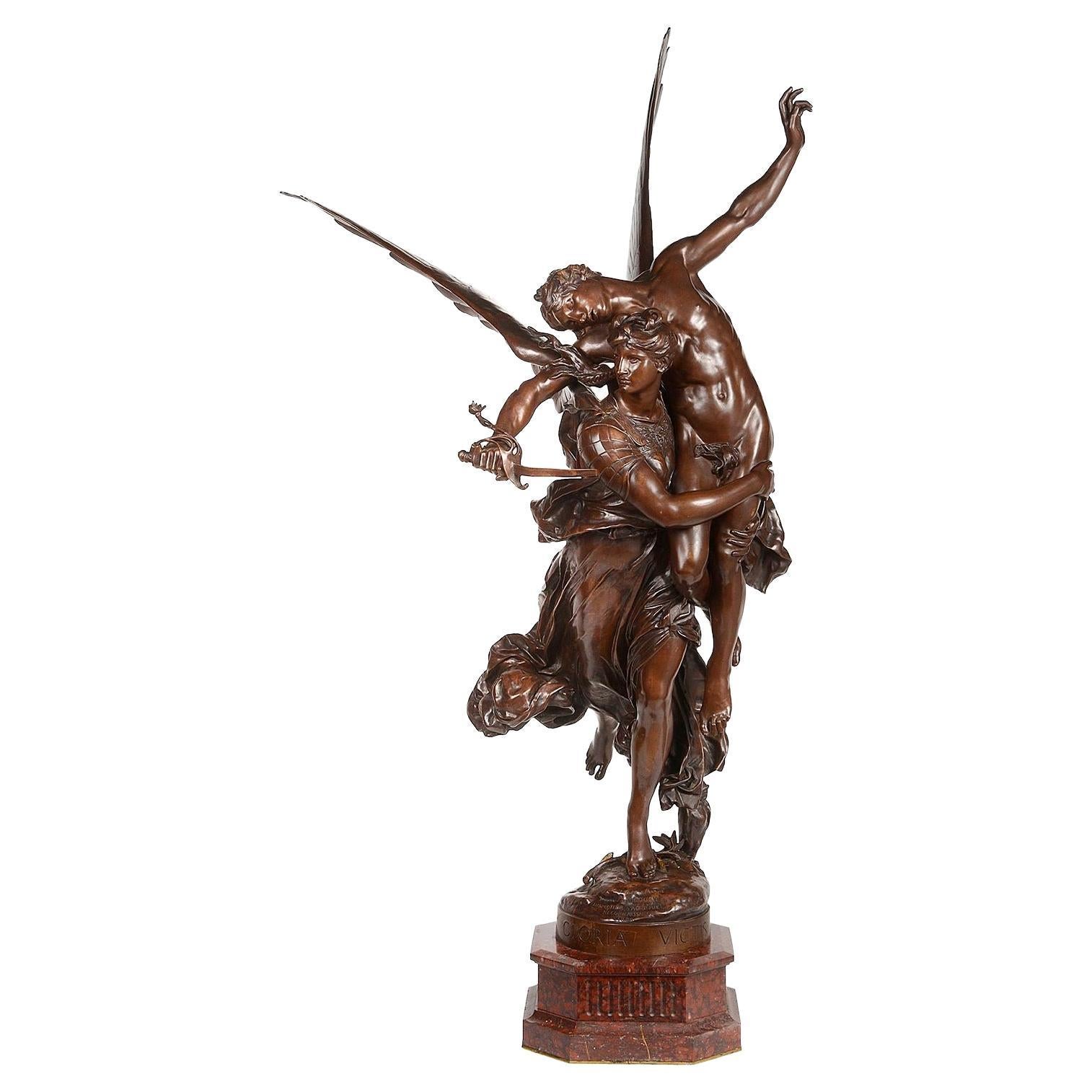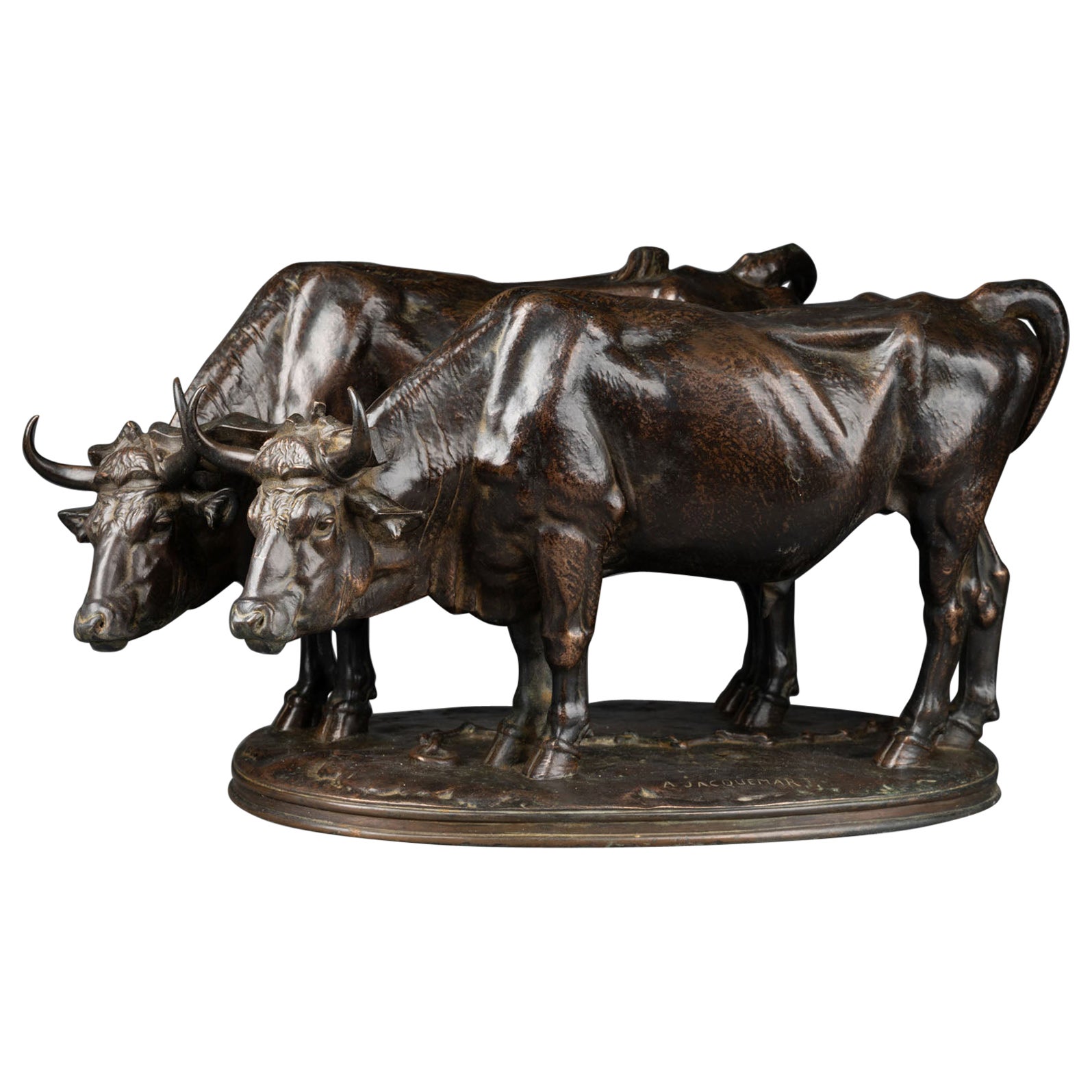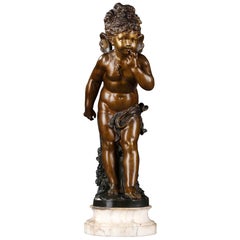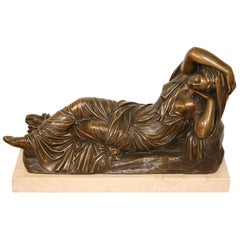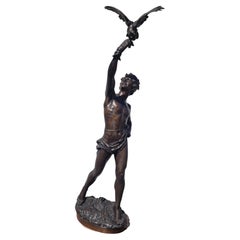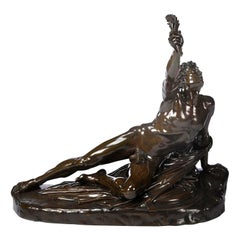
Bronze, Allegory of History by Georges Bareau, Cast Barbedienne
View Similar Items
Want more images or videos?
Request additional images or videos from the seller
1 of 20
Bronze, Allegory of History by Georges Bareau, Cast Barbedienne
About the Item
- Creator:Georges Bareau (Sculptor)
- Dimensions:Height: 19.69 in (50 cm)Width: 16.54 in (42 cm)Depth: 7.88 in (20 cm)
- Style:Art Deco (Of the Period)
- Materials and Techniques:Bronze,Patinated
- Place of Origin:
- Period:
- Date of Manufacture:circa 1927
- Condition:Wear consistent with age and use.
- Seller Location:Paris, FR
- Reference Number:Seller: 25841stDibs: LU2065313939312
About the Seller
4.9
Gold Seller
These expertly vetted sellers are highly rated and consistently exceed customer expectations.
Established in 2001
1stDibs seller since 2016
297 sales on 1stDibs
More From This SellerView All
- Clock Shepherds of Arcadia by Aizelin and BarbedienneBy Achille Collas, Eugene-Antoine AizelinLocated in Paris, FRRed Griotte mantel (fireplace) clock decorated with a patinated bronze group, Les bergers d'Arcadie (Shepherds of Arcadia) by Eugene-Antoine Aizelin (1821-19...Category
Antique 19th Century French Napoleon III Mantel Clocks
MaterialsMarble, Bronze
- Bronze Figure of Young Psyche by Paul DuboyBy Paul DuboyLocated in Paris, FRThis brown and gold patinated bronze figure was crafted by the French sculptor Paul Duboy. It features a little girl, psyche, standing on a naturalistic base. The bronze sculpture is set upon a round marble plinth...Category
Antique 19th Century French Napoleon III Figurative Sculptures
MaterialsMarble, Bronze
- Bronze bust of a naked man by Pierre ChenetBy Pierre ChenetLocated in Paris, FRProof in bronze with a nuanced brown-green patina, representing the bust of a bare, muscular man. This is a signed edition cast made by the author himself. Indeed, Pierre Chenet stil...Category
Vintage 1980s French Figurative Sculptures
MaterialsBronze
- Bust of "Psyche" in Patinated Bronze, by Boyer and RollandLocated in Paris, FRThis is a bust of Psyche in patinated bronze by the founders Boyer and Rolland. It represents a young woman wearing butterfly wings in her hair with her head turned towards an insect placed on her shoulder. The little butterfly probably represents Cupid. It is an evocation of the myth Cupid and Psyche. The sculpture rests on a red marble base placed on a rectangular stand. It is a sand casting made in the foundry of Boyer and Rolland whose mark is on the back of the bust. On the side, it is annotated Mm Léon Bertaux...Category
Antique 1870s French Busts
MaterialsMarble, Bronze
- Bronze Statue, Flying Gulls by Enrique Molins 'Spanish, 1893-1958'By Enrique Molins-BallesteLocated in Paris, FRArt Deco-period bronze statue featuring two flying gulls skimming the crest of a wave. The sculpture is set upon a black marble base. Signed H. Molins for Enrique Molins Balleste (18...Category
Early 20th Century French Art Deco Animal Sculptures
MaterialsBronze
- Art Déco style bronze sculpture of stylized rooster, from JapanLocated in Paris, FRCurious bronze sculpture patina representing a stylized rooster, made in Japan in the 1930s. Unidentified mark under the base.Category
Vintage 1930s Japanese Art Deco Animal Sculptures
MaterialsBronze
You May Also Like
- 19th C. Georges Bareau French Bronze Marble Sleeping Ariadne Statue SculptureBy Georges BareauLocated in Philadelphia, PAStunning 19th century French bronze sculpture of a Sleeping Ariadne on marble plinth by Georges Bareau, signed "G. Bareau" at the rear. Item features ...Category
Antique 19th Century French Classical Greek Sculptures
MaterialsMarble, Bronze
- G Bareau, Falconer, Signed Bronze, Late 19th Early 20th CenturyBy Georges BareauLocated in MARSEILLE, FRLarge bronze with a brown patina of a young falconer, signed G Bareau and bearing the initials HE (probably the founder) Wear of time with the patina Georges Bareau (1866-1931) is ...Category
Antique Late 19th Century French Napoleon III Figurative Sculptures
MaterialsBronze
- 'The Soldier of Marathon' Bronze after a Model by Cortot Cast by BarbedienneBy Jean Pierre Cortot, Ferdinand BarbedienneLocated in Brighton, West Sussex'The Soldier of Marathon' - A large patinated bronze group after a model by Jean-Pierre Cortot, Cast by Ferdinand Barbedienne. Jean-Pierre Cort...Category
Antique Late 19th Century French Figurative Sculptures
MaterialsBronze
- Large and Rare Patinated Bronze Bust of George Washington, by F. BarbedienneBy F. Barbedienne FoundryLocated in New York, NYA Large and Rare Patinated Bronze Bust of George Washington, after Houdon by F. Barbedienne Foundry, circa 1870. Very nice quality green patinated bronze bust of President...Category
Antique 19th Century French American Classical Busts
MaterialsBronze
- ‘Gloria Victis’, A Patinated Bronze Figural Group by Mercié, Cast by BarbedienneBy Ferdinand BarbedienneLocated in Brighton, West SussexA Patinated Bronze Figural Group of ‘Gloria Victis’ (‘Glory to the Vanquished’), Cast by Ferdinand Barbedienne from the Model by Marius-Jean-Antonin Mercié (French, 1845-1916). ‘Gloria Victis’ (‘Glory to the Vanquished’). Bronze, gilt and dark brown patina. Signed 'A. Mercié', with foundry inscription 'F. BARBEDIENNE, Fondeur. Paris.' and A. Collas reduction cachet. The integral base titled 'GLORIA VICTIS'. This cast is part of a limited edition by the Barbedienne Foundry. France. Circa 1880. ‘Gloria Victis’ is one of the most recognisable and important works of sculpture of the nineteenth century and a definitive image of France’s historic national identity. The figure of glory, winged and wearing armour, carries a dying young warrior heavenwards towards fame and immortality. The compositional daring of the group must be admired for balancing two figures on the minimal support of one foot, wings spread in the moment before taking flight. Mercié was a student at the French Academy of Rome when the Prussians invaded France in 1870. Shortly after the war had begun, he executed a group depicting the figure of Fame supporting a victorious soldier. When news reached Mercié in Rome that the French had surrendered, he decided to alter his group, replacing the victorious soldier with a defeated casualty, thus transforming an allegory of ‘Glory to the Victors’ into one of ‘Glory to the Vanquished’. Completed in 1872, a year after the defeat of French soldiers against the Prussian army, the statue personifies a defeated but heroic France. The title is also a reversal of the famous formula, ‘Vae Victis’ (Death to the Vanquished), which the Gallic general Brennus exclaimed upon defeating the Romans in 390 BC. The figure of the fallen soldier was thought to represent Henri Regnault, a fellow sculptor of Mercié who was killed on the last day of fighting. Measuring 317 cm. high the original group of ‘Gloria Victis’ was unveiled in plaster at the Salon of 1872. It was bought by the City of Paris for the sum of twelve thousand francs and then cast in bronze by Victor Thiébaut for eight thousand five hundred francs. The bronze was exhibited at the Salon in 1875 and first placed in Montholon Square in the 8th arrondissement. In 1884 it was transferred to the courtyard of the Hôtel de Ville and in 1930, it entered the collection of the Musée du Petit Palais, where it can be seen to this day. The Thiébaut Frères foundry also cast Gloria Victis bronzes for the cities of Niort (requested 1881) Bordeaux (requested 1883), Châlons-sur-Marne (today, Châlons-en-Champagne; requested 1890), and Cholet (requested 1901). In 1905, the Danish brewer and art collector Carl Jacobsen was permitted to have an exact cast made of the original sculpture in Paris, on condition that the base was made 2 cm lower and bore the inscription “Original tilhører Paris By” (The original belongs to the City of Paris). It too was cast by the Thiébaut Frères foundry. Gloria Victis was one of Jacobsen’s most important and his last acquisition. Today it has been returned to its original position in the Winter Garden at Glyptoteket, Copenhagen, Denmark. The full-size plaster was shown again at the Paris Expositon universelle of 1878 alongside a bronze reduction by Barbedienne. By this time Antonin Mercié had entered into a commercial edition contract with the Ferdinand Babedienne foundry to produce bronze reductions of Gloria Victis, his most famous work. Gloria Victis is first recorded to have been produced in three sizes and by 1886 Barbedienne’s ‘Catalogue des Bronzes D’Art’ lists six sizes measuring 3/5, 9/20, 7/20, 3/10, 6/25 and 2/10, of the original. These reductions were produced by an invention of Barbedienne’s business partner Achille Collas. The Collas reducing machine was a type of complex mechanical pantograph lathe that enabled sculpture to be mathematically measured and transcribed to scale, in the round, thus making a reduced size plaster from which a bronze could be cast. Mercié's modern sculpture had become an instant classic, even receiving an entry in the Nouveau Larousse Illustré. The success of the group undoubtedly lay in the fact that it was admired not just on an aesthetic level, but also on a patriotic level, particularly in its commemoration of heroism in defeat. Immediately ‘Gloria Victis’ was recognised as a national artwork, capable of arousing patriotism and casts were ordered from Barbedienne as local memorials commemorating the war’s dead for cities across France. ‘Gloria Victis’ was considered so much a part of France’s national identity that for the 1900 Paris Exhibition, Ferdinand Barbedienne’s nephew Gustave Leblanc, loaned a bronze example to feature as part of l’Exposition centennale de l’art français. Literature: For an interesting account of the process of creating a reduction in bronze of the Gloria Victis by Barbedienne and illustrations of the casting and finishing of the bronze see: 'Ferdinand Barbedienne': Theodore Child; Harper's new monthly magazine, Volume 73, Issue 436, September 1886. ‘Contemporary French Sculptors’: The Century, Volume 33, Issue 3, Jan 1887. ‘Modern French Sculpture’: Harper's new monthly magazine, Volume 76, Issue 452, January 1888. S, Lami, ‘Dictionnaire des sculpteurs de l'Ecole française au dix-neuvième siècle’, Tome III. G.-M., Paris, 1914, p. 432. Peter Fusco and H.W. Janson, The Romantics to Rodin: French Nineteenth Century Sculpture from North...Category
Antique 19th Century French Figurative Sculptures
MaterialsBronze
- F. Barbedienne Large Bronze Sculpture of EuterpeBy F. Barbedienne FoundryLocated in Wormelow, HerefordshireA bronze sculpture of Euterpe attributed to French metalworker Ferdinand Barbedienne (1810-1892). Embellished to the reverse with the official stamp of the Collas et Barbedienne foun...Category
Antique Mid-19th Century French Neoclassical Figurative Sculptures
MaterialsBronze
Recently Viewed
View AllMore Ways To Browse
Art Deco Bronze Victory
Art Deco Headpiece
Mask Precolumbian
Matthew Peck
Pierre Cardin Brass Bracelet
Statue Fiorentino
Vienna Designers
1890 Dress
Bronze Reading
Sword Standing
Italian Chariot
Classic Bronze Statue
British Renaissance Furniture
Ancient Terracotta Pottery
Caryatid Sculpture
Bronze Breast Sculpture
Hindu Wood Sculpture
Pair Of 18th Century Italian Carved Figures


